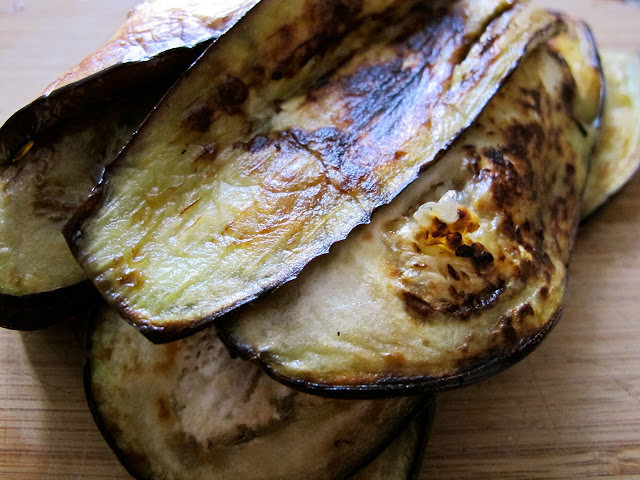There is something utterly delicious about lasagnes, meat or vegetable. This is a delicate and light alternative to the usual rich and creamy recipes. It has been inspired by my love of melanzane parmigiana and is refreshingly stress free to make. I have used a fresh tomato and garlic sauce, which lifts it from the heavy depths of traditionally cooked ones, and without the need for bechamel there are no lengthly cooking processes. This skinny gem is just layers of grilled vegetables, fresh sauce, grated mozzarella and lasagne sheets. Use good quality egg lasagne sheets, that are as thin as possible, I don't precook them but rather allow the sauce to do the job. Cool for five to ten minutes before serving and enjoy with a salad.
1-2 large aubergines
2-3 large courgettes
6 medium tomatoes
1 large garlic clove
olive oil
lasagne sheets
mozzarella, grated
sea salt and black pepper
Preheat oven to 200C. Slice aubergines and courgettes into about 5mm slices. Place aubergine slices into a colander with some salt and allow to stand for 10-15 minutes. Brush off salt before using. Heat a heavy pan medium to high, grill courgettes and aubergines until golden and slightly charred. There is no need to use any oil, the heat from the pan will help steam the vegetables and after a couple of minutes the slices should come away easily from the surface. Grill in batches and set aside until needed. In a food processor, blitz together tomatoes and garlic. Add 2 tablespoons of olive oil, half a cup of water and some salt and pepper. Blitz again.
Drizzle a baking dish with some olive oil and begin to assemble the lasagne. Start with a layer of tomato sauce, layer with a few slices of aubergine and courgette, sprinkle with mozzarella and add another thin layer of tomato sauce. Then layer with lasagne sheets and repeat process another three times. The top layer should have cheese as the final topping, you can add some extra mozzarella and grated parmesan. Finally grind some pepper over the top. Bake for 20-30 minutes until cooked through, golden and puffy.
Drizzle a baking dish with some olive oil and begin to assemble the lasagne. Start with a layer of tomato sauce, layer with a few slices of aubergine and courgette, sprinkle with mozzarella and add another thin layer of tomato sauce. Then layer with lasagne sheets and repeat process another three times. The top layer should have cheese as the final topping, you can add some extra mozzarella and grated parmesan. Finally grind some pepper over the top. Bake for 20-30 minutes until cooked through, golden and puffy.



























